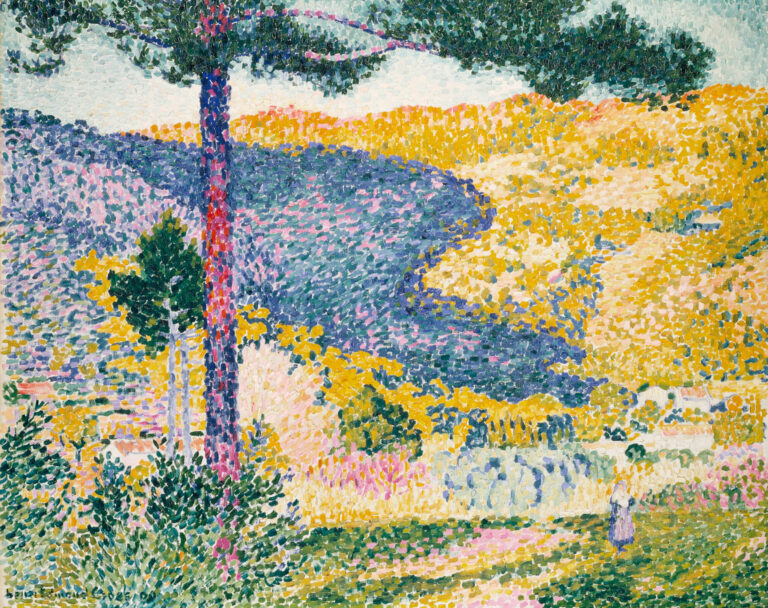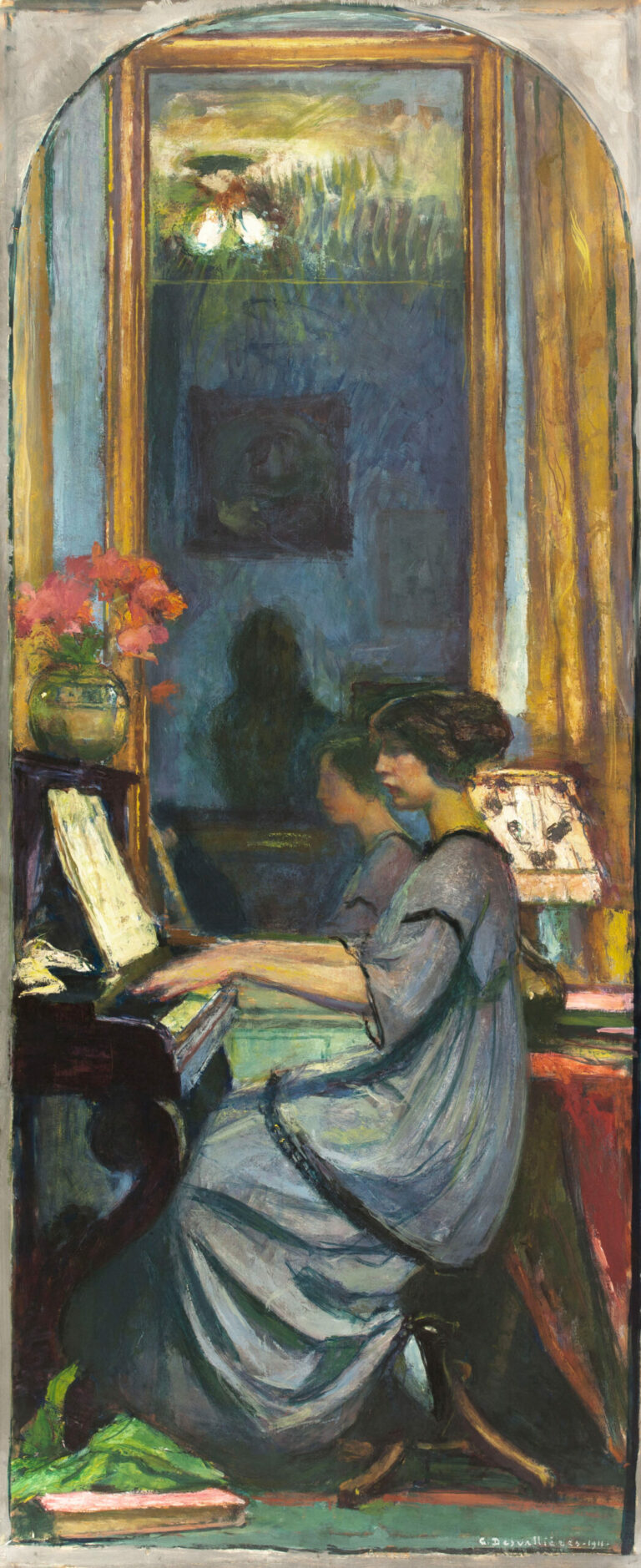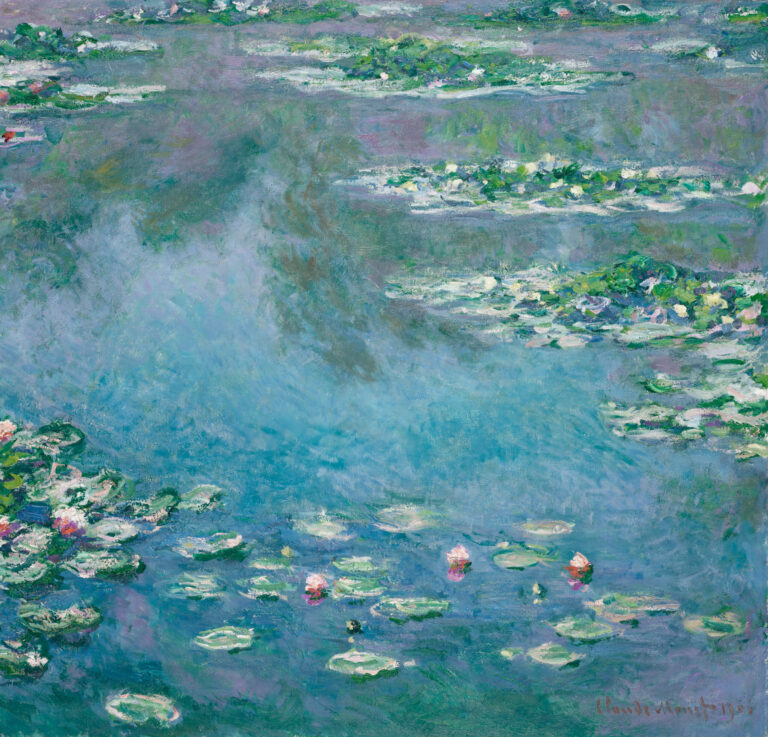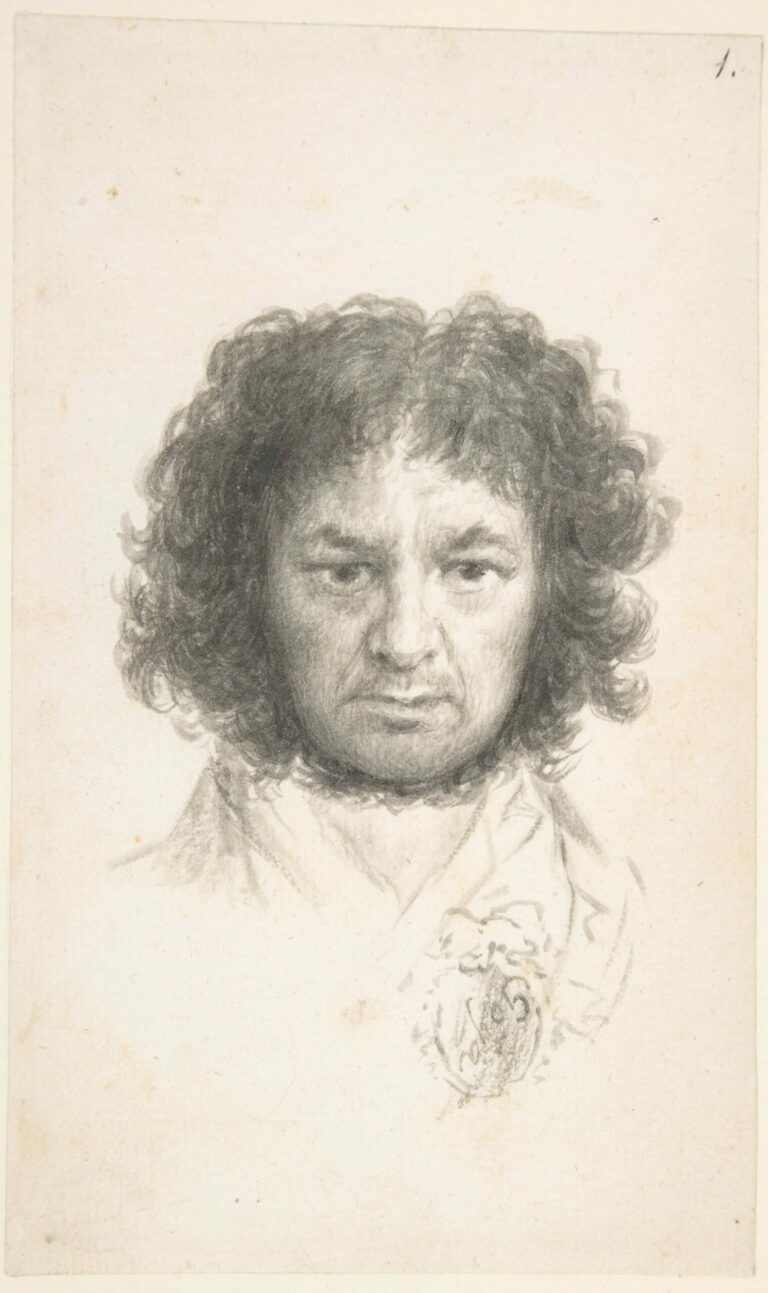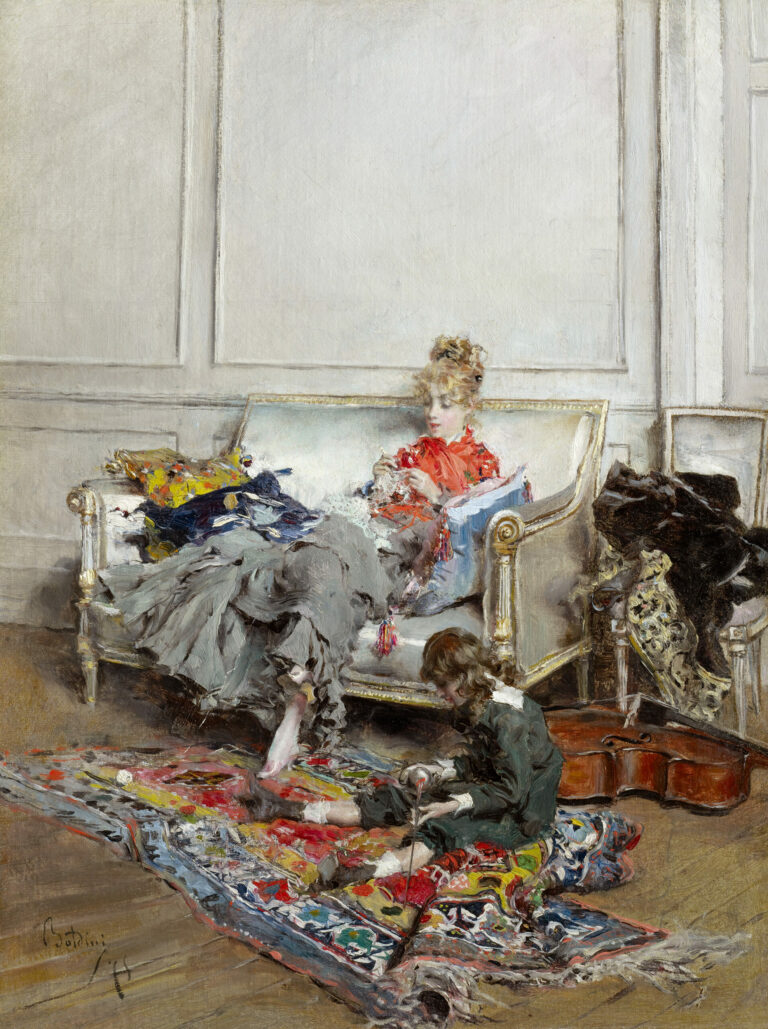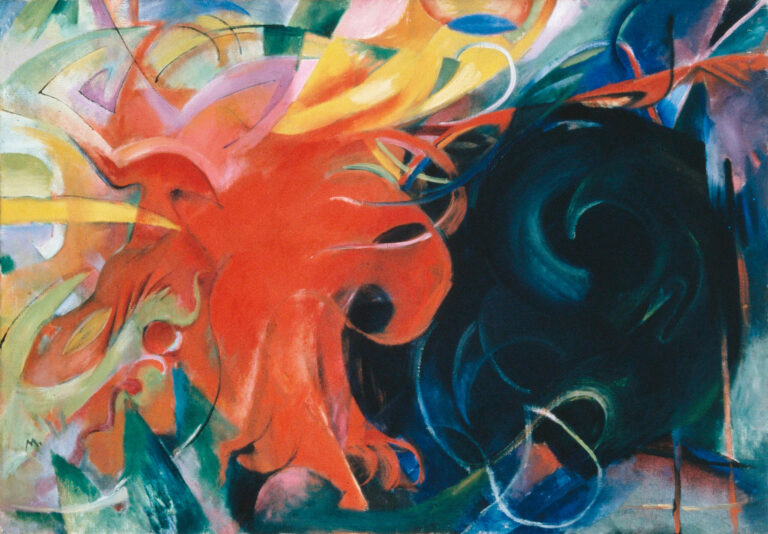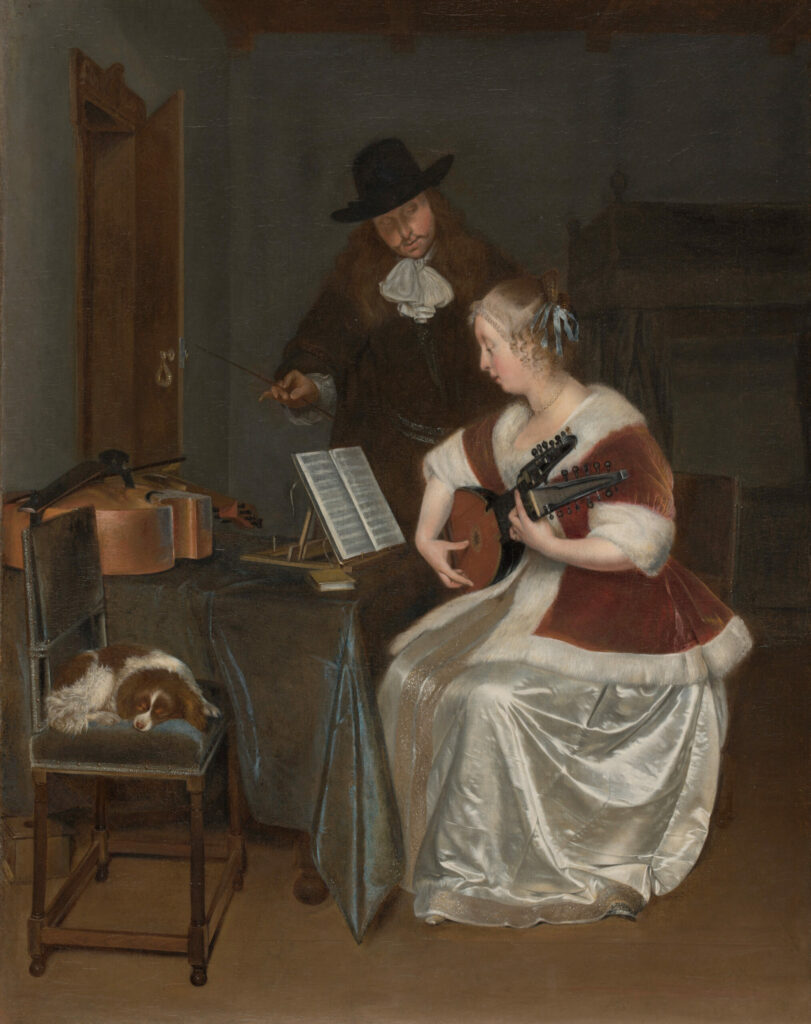
This work by Gerard ter Borch reveals the sophistication of 17th-century Dutch domestic art.
The composition, orchestrated around a table, presents a young woman elegantly dressed in a red and white gown, holding a theorbo lute. Her presumed teacher guides the lesson with a delicate gesture, while an open score directs the musical learning.
The meticulously detailed setting testifies to bourgeois opulence: various instruments arranged on the table, a small dog asleep on an upholstered chair. This accumulation of precious objects underscores the high social status of the protagonists and the importance of musical education in the cultivated society of the period.
The narrative ambiguity remains characteristic of ter Borch: the proximity of the figures, their similar ages, and the intimacy of the scene question the exact nature of their relationship. This psychological subtlety, combined with a technique of remarkable finesse in rendering satiny textures and light effects, makes this painting a masterpiece of Dutch genre art.
Further information
- The Music Lesson, by Gerard ter Borch (Dutch, 1617-1681), circa 1670
- 63.6 × 50.4 cm (25 × 19 7/8 in.)
- The Art Institute of Chicago, European Painting and Sculpture, Gallery 212
- https://www.artic.edu/artworks/512/the-music-lesson
Gerard ter Borch (1617-1681) established himself as one of the most refined portraitists of the Dutch School. Specializing in small-format portraits and genre scenes, he excelled in depicting the wealthy bourgeoisie of his time. His work is distinguished by a subtle psychological approach and extraordinarily refined technique, particularly in the treatment of fabrics and expressions. Ter Borch cultivated the art of suggestion and narrative ambiguity, creating scenes where music, correspondence, and conversation become pretexts for exploring human relationships in their complexity.

